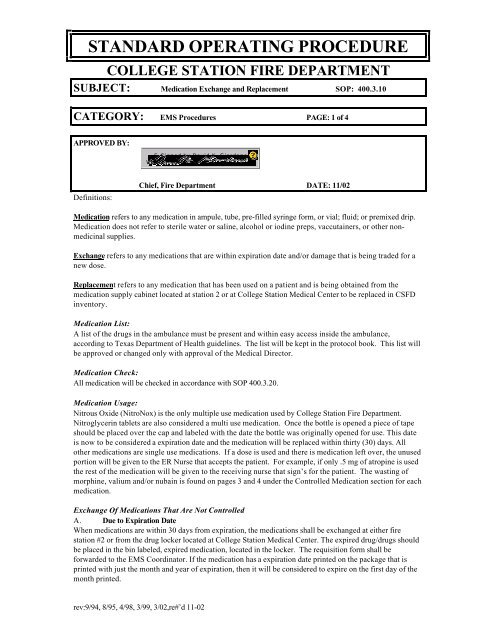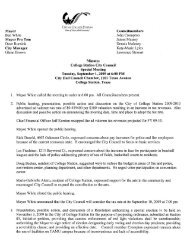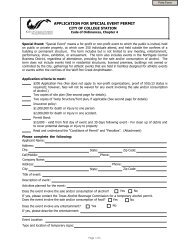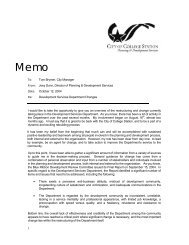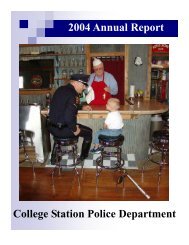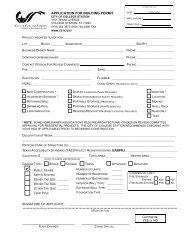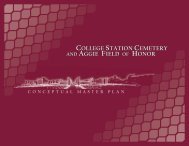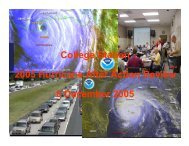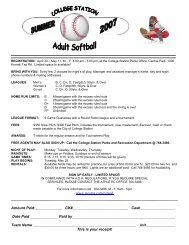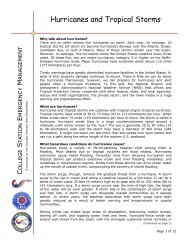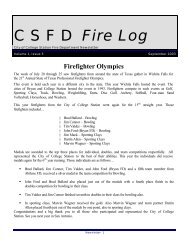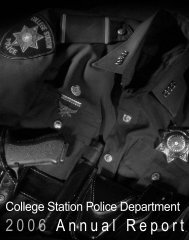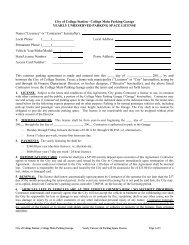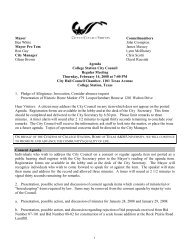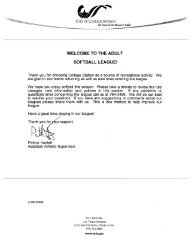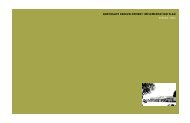standard operating procedure college station fire department
standard operating procedure college station fire department
standard operating procedure college station fire department
Create successful ePaper yourself
Turn your PDF publications into a flip-book with our unique Google optimized e-Paper software.
STANDARD OPERATING PROCEDURE<br />
COLLEGE STATION FIRE DEPARTMENT<br />
SUBJECT: Medication Exchange and Replacement SOP: 400.3.10<br />
CATEGORY: EMS Procedures PAGE: 1 of 4<br />
APPROVED BY:<br />
E-Signed by David K. Giordano<br />
VERIFY authenticity with ApproveIt<br />
Definitions:<br />
Chief, Fire Department DATE: 11/02<br />
Medication refers to any medication in ampule, tube, pre-filled syringe form, or vial; fluid; or premixed drip.<br />
Medication does not refer to sterile water or saline, alcohol or iodine preps, vaccutainers, or other nonmedicinal<br />
supplies.<br />
Exchange refers to any medications that are within expiration date and/or damage that is being traded for a<br />
new dose.<br />
Replacement refers to any medication that has been used on a patient and is being obtained from the<br />
medication supply cabinet located at <strong>station</strong> 2 or at College Station Medical Center to be replaced in CSFD<br />
inventory.<br />
Medication List:<br />
A list of the drugs in the ambulance must be present and within easy access inside the ambulance,<br />
according to Texas Department of Health guidelines. The list will be kept in the protocol book. This list will<br />
be approved or changed only with approval of the Medical Director.<br />
Medication Check:<br />
All medication will be checked in accordance with SOP 400.3.20.<br />
Medication Usage:<br />
Nitrous Oxide (NitroNox) is the only multiple use medication used by College Station Fire Department.<br />
Nitroglycerin tablets are also considered a multi use medication. Once the bottle is opened a piece of tape<br />
should be placed over the cap and labeled with the date the bottle was originally opened for use. This date<br />
is now to be considered a expiration date and the medication will be replaced within thirty (30) days. All<br />
other medications are single use medications. If a dose is used and there is medication left over, the unused<br />
portion will be given to the ER Nurse that accepts the patient. For example, if only .5 mg of atropine is used<br />
the rest of the medication will be given to the receiving nurse that sign’s for the patient. The wasting of<br />
morphine, valium and/or nubain is found on pages 3 and 4 under the Controlled Medication section for each<br />
medication.<br />
Exchange Of Medications That Are Not Controlled<br />
A. Due to Expiration Date<br />
When medications are within 30 days from expiration, the medications shall be exchanged at either <strong>fire</strong><br />
<strong>station</strong> #2 or from the drug locker located at College Station Medical Center. The expired drug/drugs should<br />
be placed in the bin labeled, expired medication, located in the locker. The requisition form shall be<br />
forwarded to the EMS Coordinator. If the medication has a expiration date printed on the package that is<br />
printed with just the month and year of expiration, then it will be considered to expire on the first day of the<br />
month printed.<br />
rev:9/94, 8/95, 4/98, 3/99, 3/02,re#’d 11-02


